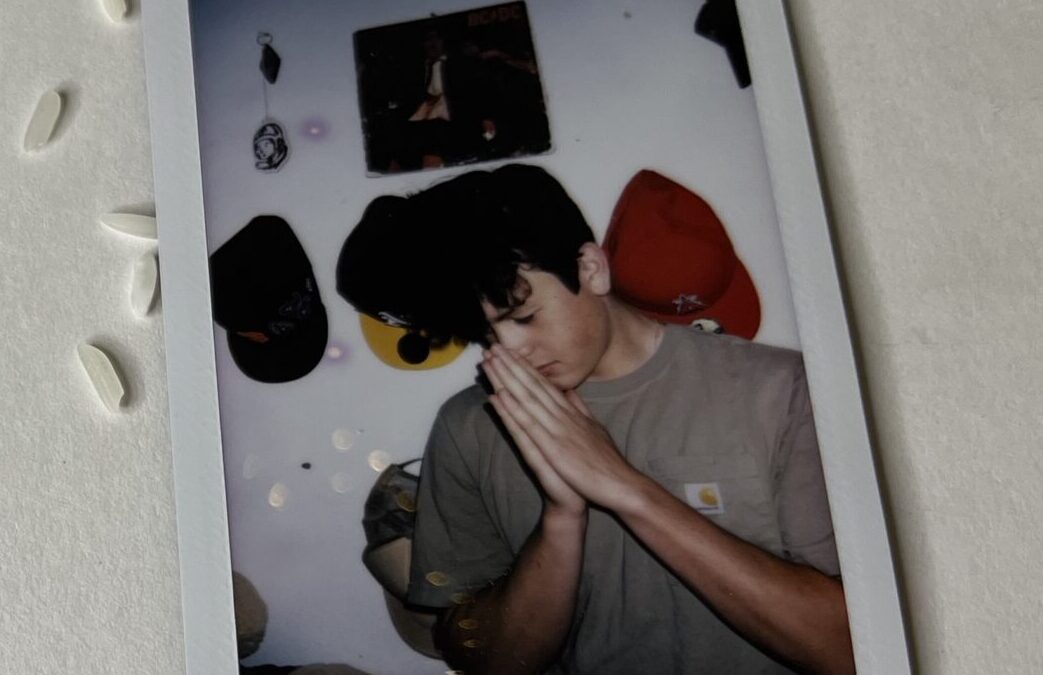A vehicle is parked abruptly within a neighborhood gravel driveway. The air outside is dry and dust covers the surrounding cars, leaving a fuzzy, thin layer of light brown on the hoods. There’s a faint sound of the Deschutes River mumbling in the distance, and the motor creates a thin, tall cloud expelling from the exhaust pipe.
An older woman steps outside of the driver’s seat, and while the car’s still running, grabs three casserole dishes. They’re all filled with fried rice.
Fifteen-year-old Makalin Erickson is playing on his Xbox when he hears the doorbell ring. Confused, Erickson rises from his blanket-wrapped cocoon and heads upstairs.
The front door opens. “Grammy!” Erickson yells.
Erickson’s grandmother, Sukimaki, walks through the front door carrying one casserole dish at a time and smiles when she arrives in the kitchen. The excitement on her grandson’s face never fails to make Sukimaki smile.
Around three times a week, Sukimaki drops off homemade, large traditional Japanese dishes unannounced at her grandson’s home in Bend, Oregon.
“Hello Maky” Sukimaki responds softly.
Brief words are exchanged. Few words are needed to be spoken. Sukimaki knew by now that her grandson’s urgency to dig into these wonderful home-cooked meals was a compliment, and not intended to be disrespectful. Erickson smiles back wide a toothy grin, thanking Sukimaki for the wonderful meal, and then proceeds to take a couple bites straight out of the casserole dish. Erickson shortly after goes back downstairs.
For the rest of the evening, Erickson will ride his bike around the community mall and partake in American gossip, music, and food with his other fifteen-year-old-something friends. Those ten minutes of seeing his grandmother and eating her home-cooked Japanese food are what Erickson reports to be the only Japanese exposure he gets in his hometown of Bend, Oregon:
“One of the only ways I manage to stay connected to my culture is through my grandmother’s cooking. I hope to cook with my kids someday to carry on the tradition/cultural feel. The food’s all I really got left. It’s a bummer my grandmother and father had to both marry super white folks.”
The demographic of Japanese people is below .4 percent within the city of Bend, Oregon. How do these people stay alive (culturally) you may ask? Through food.
Sukimaki was born a year after her family was released from a Japanese internment camp in WWII. Never being exposed to life in Japan, she does her best to live lively with Japanese pride within the United States.
“That’s why it’s important to her that we receive weekly meals of fresh, traditional Japanese dishes.”
She aims to keep the culture alive, even if she’s unable to in Japan. Erickson elaborates on how his grandmother Sukimaki expresses her Japanese pride within the more personal parts of her life:
“Her wardrobe is full of traditional dress. She and her girlfriends in Seattle would get together frequently, and make tea. They [her friends] were sort of her lifeline to preserving Japanese culture, and she misses them all the time.”
To this day, Erickson doesn’t know much about his grandmother’s history of being born in WWII as a Japanese American, but he does know that food plays a large role in keeping her Japanese pride/identity alive.
“I think her cooking food for us helps her feel more connected to Japanese culture…that’s why I’d like to learn how to make my Grandmama’s famous fried rice; to pass on the tradition to my kids. I might not get a lot of Japanese representation or culture in my life, but at least I get fried rice.”
–
Additional Sources
ZipAtlas.com. (2023). Cities with the highest percentage of Japanese population in Oregon. Percentage of Japanese Population in Oregon by City | 2023 | Zip Atlas. https://zipatlas.com/us/or/city-comparison/percentage-japanese-population.htm

